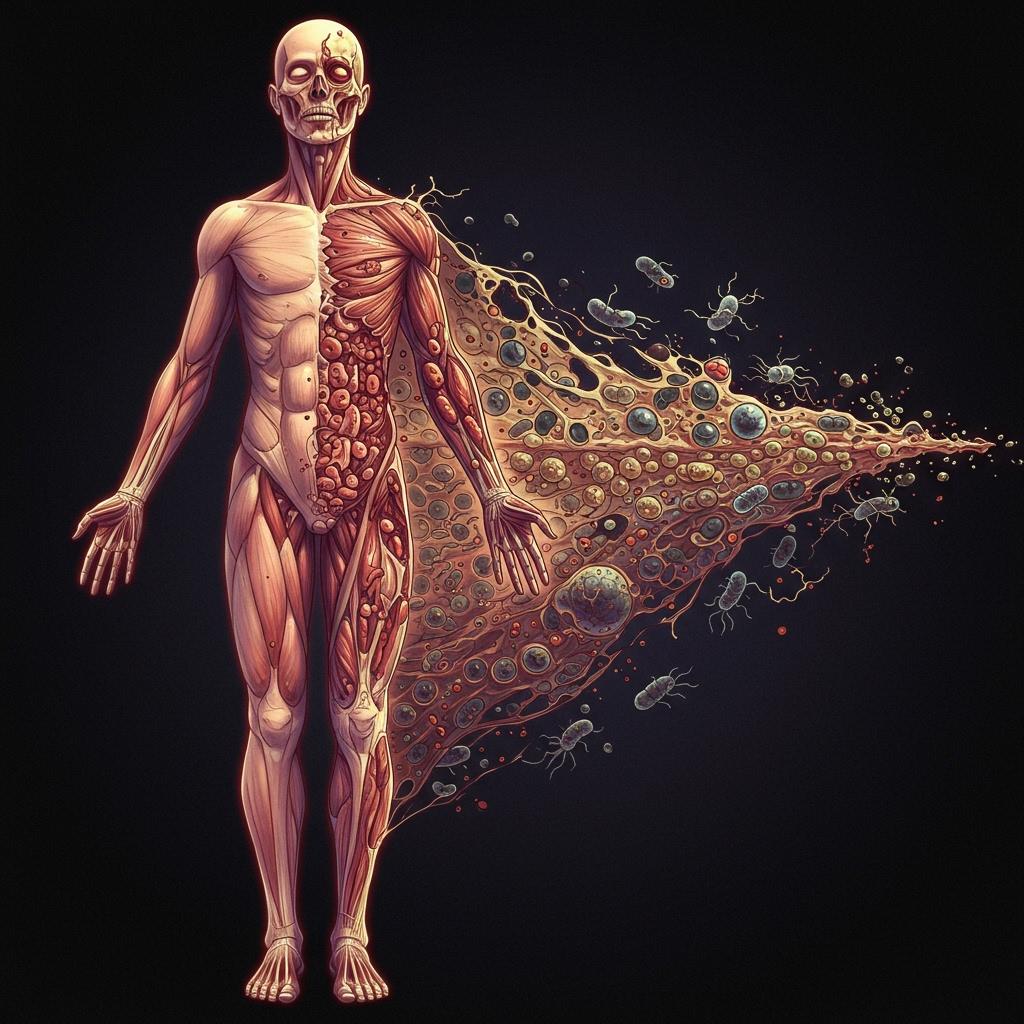What Happens to Your Body at the Molecular Level When You Die
 Visualizing the molecular breakdown of the human body after death — from living cells to decomposition.
Visualizing the molecular breakdown of the human body after death — from living cells to decomposition.
Exploring the invisible chemistry behind life’s final moments
By Peter Teoh, Science Writer
Introduction
Death is a natural part of life, but have you ever wondered what really happens inside your body when you die? Beyond the stillness and silence, a fascinating and complex molecular drama unfolds. Your body doesn’t simply stop; it begins a series of chemical and biological changes that scientists are still unlocking. Let’s dive into this invisible world and explore the molecular journey your body takes after the heart stops beating.
The Moment Life Ends: What Does Death Mean for Your Cells?
The exact moment of death is when all biological functions that keep you alive stop working—no heartbeat, no breathing, no brain signals. But on a molecular level, the story continues.
Within minutes after your heart stops, oxygen supply to your cells ceases. Oxygen is crucial because it helps your cells produce energy through a molecule called ATP (adenosine triphosphate). ATP fuels everything your cells do, from muscle contractions to repairing damage.
Without oxygen, ATP production halts — usually within 3 to 6 hours, ATP is completely depleted[3]. Without this energy source, cells can no longer maintain their membranes or perform vital functions.
Autolysis: Cells Start Eating Themselves
One of the first molecular changes after death is called autolysis, meaning “self-digestion.” Enzymes inside your cells, which normally help with digestion and repair, start breaking down cell membranes and structures because the cell’s controls fail[1].
This process starts in organs rich in enzymes like the liver and those with a lot of water like the brain. As membranes break down, cellular contents spill into surrounding tissues, causing further breakdown and discoloration.
A Shift in Chemistry: pH and Metabolites Change
As cells die, chemical reactions continue but in a chaotic way. Normally, your blood maintains a steady pH around 7.4 (slightly basic), but after death, pH drops to around 5.1 due to accumulating acidic byproducts[2].
Several molecules in your blood change in concentration during this time:
- Lactic acid rises initially as cells switch to anaerobic metabolism before dying.
- Hypoxanthine, ammonia, NADH, and formic acid increase steadily[2].
These chemical shifts can help forensic scientists estimate how long someone has been dead.
Putrefaction: The Microbial Takeover
With your immune system offline, bacteria—especially those living in your gut—begin to multiply uncontrollably. This stage, called putrefaction, releases gases like hydrogen sulfide and volatile organic compounds (VOCs) such as methanethiol and dimethyl disulfide[1].
These gases cause the body to bloat and produce the characteristic foul odors of decay. They also cause fluids to leak from body openings. The gases and chemicals attract insects that help speed up decomposition.
Physical Signs You Might Recognize
On the outside, these molecular changes cause visible effects:
- Livor mortis: Blood pools due to gravity, creating purple patches on the skin[1][3].
- Rigor mortis: Muscles stiffen as energy runs out.
- Skin discoloration and marbling: Due to blood breakdown and enzyme activity[3].
Advanced Decay and Skeletonization
After days to weeks, the body moves into advanced decomposition where tissues liquefy and dry out[4]. Eventually, skeletonization occurs as bones remain after soft tissues disappear.
Why Study These Changes?
Understanding what happens at the molecular level after death helps scientists in many ways:
- Forensic science: Estimating time since death.
- Medical research: Understanding diseases and cellular processes.
- Biochemistry: Learning how life processes shut down.
Closing Thoughts
Death might seem like the end, but at the molecular level, it’s just the start of a remarkable transformation. From the silent breakdown of cells to the microbial takeover, your body becomes a complex chemical landscape. This invisible process reminds us how intricately life is woven through chemistry and biology.
Side Notes
- ATP (Adenosine Triphosphate): The energy currency of cells.
- pH: A scale measuring acidity or alkalinity; below 7 is acidic.
- Volatile Organic Compounds (VOCs): Gases released during decay.
Trending Sidebar
- How forensic scientists use smell to solve mysteries
- The role of bacteria in ecosystems: From decay to rebirth
- What is rigor mortis and why does it happen?
References
-
What happens to our bodies after we die? | Chemistry World
https://www.chemistryworld.com/features/what-happens-to-our-bodies-after-we-die/4021259.article -
Biochemistry Changes That Occur after Death: Potential Markers for … | PMC
https://pmc.ncbi.nlm.nih.gov/articles/PMC3836773/ -
Chemical Decomposition | FSU Chemistry Lecture Notes
https://www.chem.fsu.edu/chemlab/chm1020c/Lecture%208/03.php -
Stages of human death - Wikipedia
https://en.wikipedia.org/wiki/Stages_of_human_death